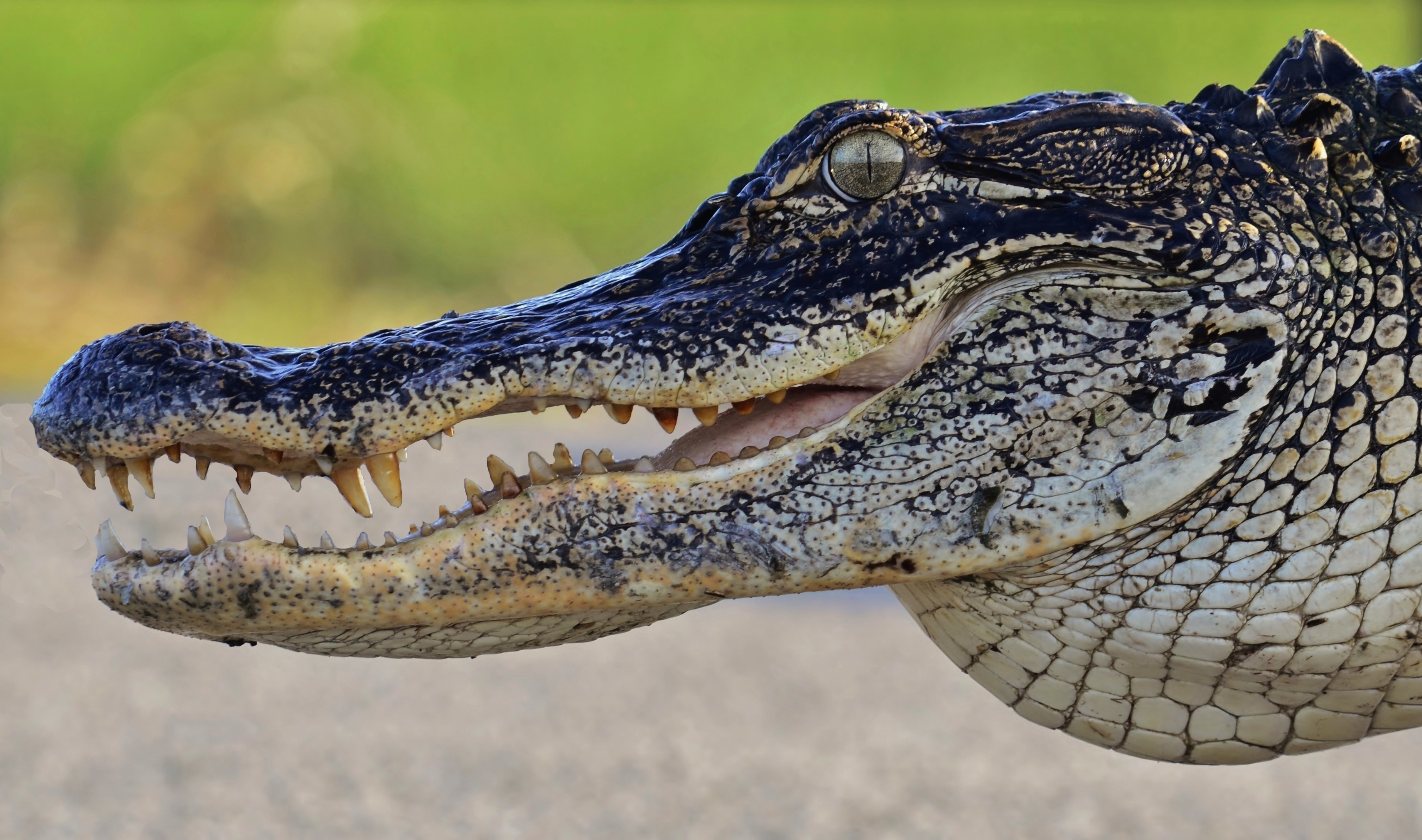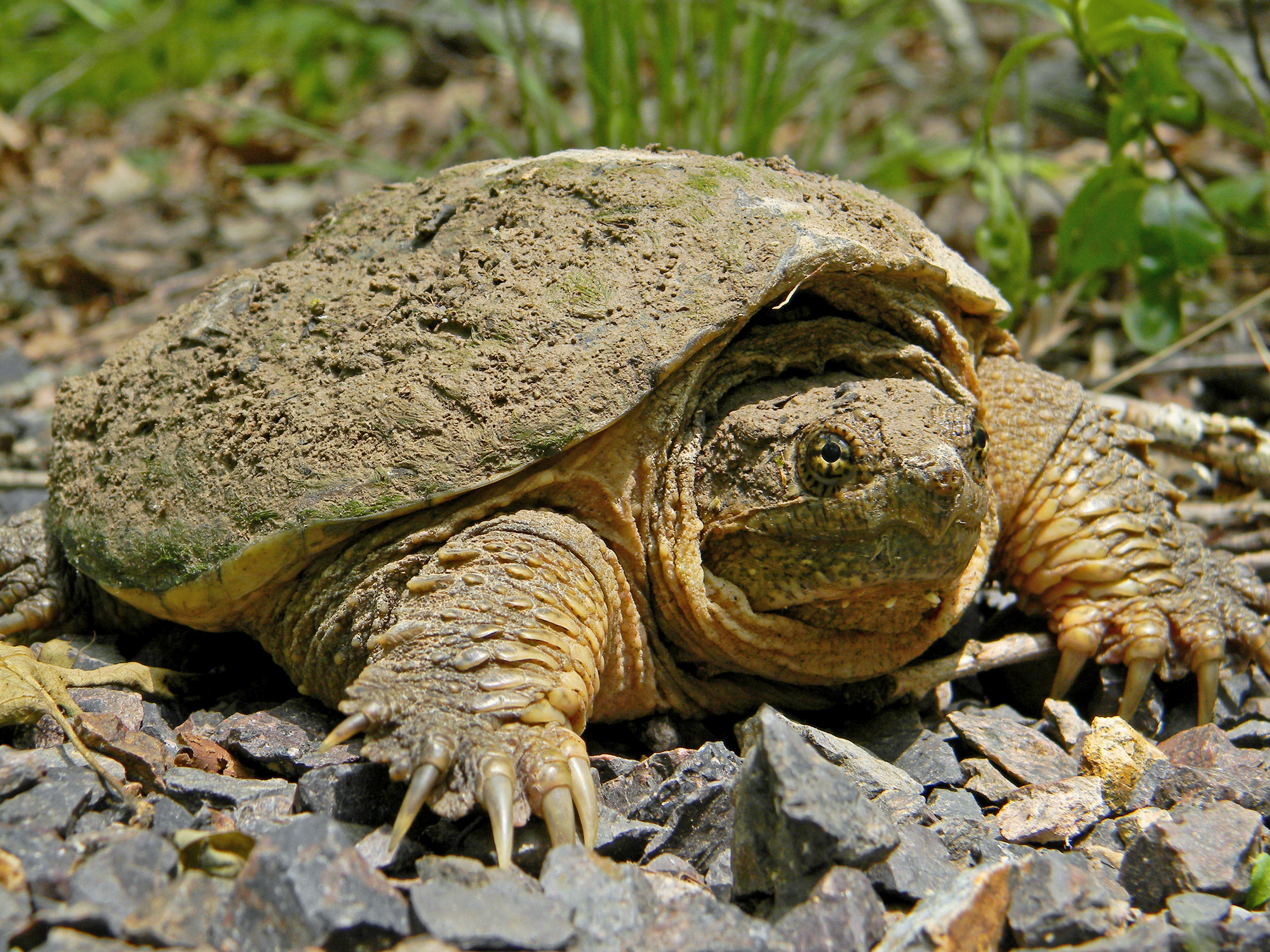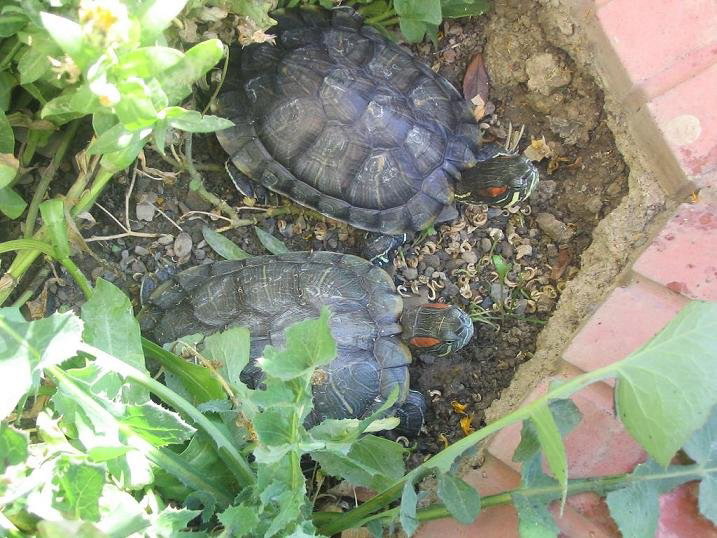|
Reptiles Of Florida
This is a list of reptiles which are found in the U.S. state of Florida. This list includes both native and introduced species. Introduced species are put on this list only if they have an established population (large breeding population, numerous specimens caught, invasive, etc.). Three out of the four orders of reptiles can be found in Florida, with the order Tuatara being absent. Though many sources have different amounts (due to introduced species), this lists 118 species, which is about right. Testudines This order includes all the freshwater and sea turtles, as well as the land tortoises. Overall, 26 species can be found. Florida has many turtles, but only one species of tortoise. Emydids *Pond slider * Spotted turtle *Painted turtle * Chicken turtle * Coastal plain cooter *Common box turtle * false map turtle * Escambia map turtle *Barbour's map turtle * Florida red-bellied cooter * Peninsula cooter *Suwannee cooter * Red-eared slider * Yellow-bellied slider *Easte ... [...More Info...] [...Related Items...] OR: [Wikipedia] [Google] [Baidu] |
Escambia Map Turtle
The Escambia map turtle (''Graptemys ernsti)'', also known commonly as Ernst's map turtle, is a species of turtle in the family Emydidae. The species is endemic to the United States. Geographic range ''G. ernsti'' is found in southern Alabama and western Florida, in rivers which drain into Escambia Bay. Habitat The preferred natural habitat of ''G. ernsti'' is flowing fresh water, in medium to large creeks and rivers. Etymology The specific name, ''ernsti'', is in honor of American herpetologist Dr. Carl Henry Ernst. Beolens, Bo; Watkins, Michael; Grayson, Michael (2011). ''The Eponym Dictionary of Reptiles''. Baltimore: Johns Hopkins University Press. xiii + 296 pp. . (''Graptemys ernsti'', p. 85). Description Females of ''G. ernsti'' are larger than males. Females may attain a straight carapace length of , but males only grow to a straight carapace length of . Diet The diet of ''G. ernsti'' varies according to age and gender. Males and juveniles prey predominately upon i ... [...More Info...] [...Related Items...] OR: [Wikipedia] [Google] [Baidu] |
Eastern Mud Turtle
The eastern mud turtle (''Kinosternon subrubrum'') or common mud turtle is a common species of turtle in the family Kinosternidae. The species is endemic to the United States. There are two recognized subspecies. Description The eastern mud turtle is a small and often hard to identify species. It measures in carapace length. The carapace is keelless, lacks any pattern, and varies in color from yellowish to black. The plastron is large and double hinged, and can be yellowish to brown, and may sometimes have a dark pattern. The chin and throat are a yellowish grey, streaked and mottled with brown, while the limbs and tail are grayish. The eye, or iris, of the eastern mud turtle is yellow with dark clouding, and its feet are webbed. Diet The eastern mud turtle is omnivorous and feeds on insects, crustaceans, mollusks, amphibians, carrion, and aquatic vegetation. Smaller eastern mud turtles prey on small aquatic insects, algae, and carrion, whereas larger ones can feed on any ty ... [...More Info...] [...Related Items...] OR: [Wikipedia] [Google] [Baidu] |
Kinosternidae
The Kinosternidae are a family of mostly small turtles that includes the mud turtles and musk turtles. The family contains 25 species within four genera, but taxonomic reclassification is an ongoing process, so many sources vary on the exact numbers of species and subspecies. They inhabit slow-moving bodies of water, often with soft, muddy bottoms and abundant vegetation. Description Most kinosternids are small turtles, in carapace length. The highly domed carapace has a distinct keel down its center. The genus '' Staurotypus'' gets much larger, to . Females are generally larger than males, but males have much longer tails. Kinosternids can be black, brown, green, or yellowish in color. Most species do not have shell markings, but some species have radiating black markings on each carapace scute. Some species have distinctive yellow striping along the sides of the head and neck. The musk turtles are so named because they are capable of releasing a foul-smelling musk from gland ... [...More Info...] [...Related Items...] OR: [Wikipedia] [Google] [Baidu] |
Common Snapping Turtle
The common snapping turtle (''Chelydra serpentina'') is a species of large freshwater turtle in the family Chelydridae. Its natural range extends from southeastern Canada, southwest to the edge of the Rocky Mountains, as far east as Nova Scotia and Florida. The three species of ''Chelydra'' and the larger alligator snapping turtles (genus '' Macrochelys'') are the only extant chelydrids, a family now restricted to the Americas. The common snapping turtle, as its name implies, is the most widespread. The common snapping turtle is noted for its combative disposition when out of the water with its powerful beak-like jaws, and highly mobile head and neck (hence the specific epithet ''serpentina'', meaning "snake-like"). In water, it is likely to flee and hide underwater in sediment. The common snapping turtle has a life-history strategy characterized by high and variable mortality of embryos and hatchlings, delayed sexual maturity, extended adult longevity, and iteroparity (repeat ... [...More Info...] [...Related Items...] OR: [Wikipedia] [Google] [Baidu] |
Alligator Snapping Turtle
The alligator snapping turtle (''Macrochelys temminckii'') is a large species of turtle in the family Chelydridae. The species is native to freshwater habitats in the United States. ''M. temminckii'' is one of the heaviest freshwater turtles in the world. It is the largest freshwater species of turtle in North America. It is often associated with, but not closely related to, the common snapping turtle, which is in the genus ''Chelydra''. The specific epithet ''temminckii'' is in honor of Dutch zoologist Coenraad Jacob Temminck. Taxonomy Although it was once believed that only one extant species exists in the genus '' Macrochelys'', recent studies have shown that there are two species, the other being the Suwannee snapping turtle (''M. suwanniensis'') of the Suwannee River. A third species, the Apalachicola snapping turtle (''M. apalachicolae''), has been proposed, but is generally not recognized. The alligator snapping turtle is given its common name because of its imme ... [...More Info...] [...Related Items...] OR: [Wikipedia] [Google] [Baidu] |
Chelydridae
The Chelydridae is a family of turtles that has seven extinct and two extant genera. The extant genera are the snapping turtles, ''Chelydra'' and '' Macrochelys''. Both are endemic to the Western Hemisphere. The extinct genera are '' Acherontemys'', '' Chelydrops'', '' Chelydropsis'', ''Emarginachelys'', '' Macrocephalochelys'', '' Planiplastron'', and '' Protochelydra''. Fossil history The Chelydridae have a long fossil history, with extinct species reported from North America as well as all over Asia and Europe, far outside their present range. The earliest described chelydrid is '' Emarginachelys cretacea'', known from well-preserved fossils from the Maastrichtian stage of the Late Cretaceous of Montana. Another well-preserved fossil chelydrid is the Late Paleocene ''Protochelydra zangerli'' from North Dakota. The carapace of ''P. zangerli'' is higher-domed than that of the recent ''Chelydra'', a trait conjectured to be associated with the coexistence of large, turtle-eating c ... [...More Info...] [...Related Items...] OR: [Wikipedia] [Google] [Baidu] |
Diamondback Terrapin
The diamondback terrapin or simply terrapin (''Malaclemys terrapin'') is a species of turtle native to the brackish coastal tidal marshes of the Northeastern and southern United States, and in Bermuda. It belongs to the monotypic genus ''Malaclemys''. It has one of the largest ranges of all turtles in North America, stretching as far south as the Florida Keys and as far north as Cape Cod. The name "terrapin" is derived from the Algonquian word . It applies to ''Malaclemys terrapin'' in both British English and American English. The name originally was used by early European settlers in North America to describe these brackish-water turtles that inhabited neither freshwater habitats nor the sea. It retains this primary meaning in American English. In British English, however, other semi-aquatic turtle species, such as the red-eared slider, might also be called terrapins. Description The common name refers to the diamond pattern on top of its shell (carapace), but the overall p ... [...More Info...] [...Related Items...] OR: [Wikipedia] [Google] [Baidu] |
Eastern River Cooter
The eastern river cooter (''Pseudemys concinna concinna'') is a subspecies of turtle native to the eastern United States, with a smaller population in the midwest. It is found in freshwater habitats such as rivers, lakes, and ponds. Taxonomy The eastern river cooter is a subspecies within the species ''Pseudemys concinna'', known as the river cooter. The exact number of subspecies is debated, but most experts recognize two: ''P. c. concinna'', and ''suwannee cooter, P. c. suwanniensis''. Sometimes another subspecies, ''coastal plain cooter, P. c. floridana'' is recognized, but this is often treated as a separate species. Description Eastern river cooters are capable of growing up to . The carapace (upper shell) is typically dark greenish brown usually with a "C" marking facing the posterior. In western populations, the "C" may be reduced and many yellow markings may be present on each scute. The background color is reddish brown, unlike the other subspecies, ''P. c. suwanniensis' ... [...More Info...] [...Related Items...] OR: [Wikipedia] [Google] [Baidu] |
Yellow-bellied Slider
The yellow-bellied slider (''Trachemys scripta scripta'') is a land and water turtle belonging to the family Emydidae. This subspecies of pond slider is native to the southeastern United States, specifically from Florida to southeastern Virginia, and is the most common turtle species in its range. It is found in a wide variety of habitats, including slow-moving rivers, floodplain swamps, marshes, seasonal wetlands, and permanent ponds. Yellow-bellied sliders are popular as pets. Description Adult male yellow-bellied sliders typically reach in length; females range from . The carapace (upper shell) is typically brown and black, often with yellow stripes. The skin is olive green with prominent patches of yellow down the neck and legs. As the name implies, the plastron (bottom shell) is mostly yellow with black spots along the edges. Adults tend to grow darker as they age. Yellow-bellied sliders are often confused with eastern river cooters, who also have yellow stripes on the ne ... [...More Info...] [...Related Items...] OR: [Wikipedia] [Google] [Baidu] |
Red-eared Slider
The red-eared slider or red-eared terrapin (''Trachemys scripta elegans'') is a subspecies of the pond slider (''Trachemys scripta''), a semiaquatic turtle belonging to the family Emydidae. It is the most popular pet turtle in the United States, is also popular as a pet across the rest of the world, and is the most invasive turtle. It is the most commonly traded turtle in the world. The red-eared slider is native from the Midwestern United States to northern Mexico, but has become established in other places because of pet releases, and has become invasive in many areas where it outcompetes native species. The red-eared slider is included in the list of the world's 100 most invasive species. Etymology The red-eared slider gets its name from the small, red stripe around its ears, or where its ears would be, and from its ability to slide quickly off rocks and logs into the water. This species was previously known as Troost's turtle in honor of an American herpetologist ... [...More Info...] [...Related Items...] OR: [Wikipedia] [Google] [Baidu] |
Suwannee Cooter
The Suwannee cooter (''Pseudemys concinna suwanniensis'') is a subspecies of turtle in the genus ''Pseudemys''. It is a subspecies of the river cooter. The species is endemic to Florida, including in the Suwannee River. Conservation status ''P. c. suwanniensis'' was hunted for its meat, but is now protected.Suwannee cooter Florida Fish and Wildlife Conservation Commission. Appearance Thecarapace
A carapace is a Dorsum (biology), dorsal (upper) section of the exoskeleton or shell in a number of animal groups, including arthropods, such as crustaceans and arachnids, as well as vertebrates, such as turtles and tortoises. In turtles and tor ...
< ... [...More Info...] [...Related Items...] OR: [Wikipedia] [Google] [Baidu] |




